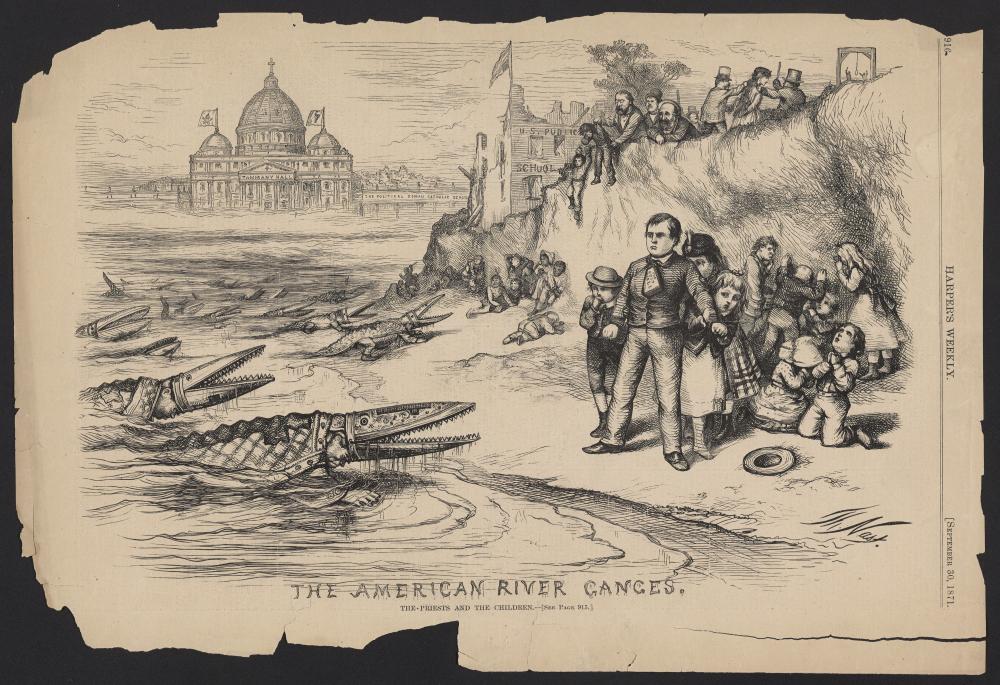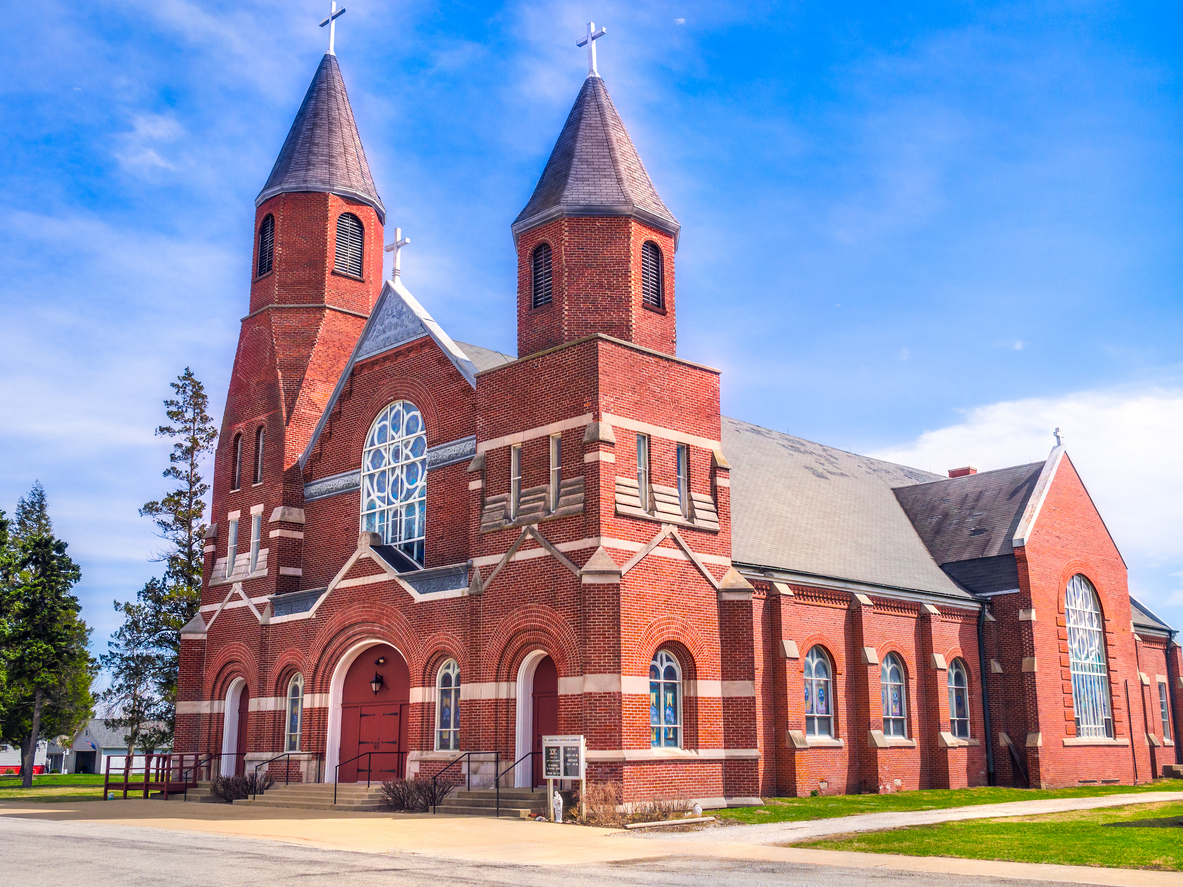A Bittersweet Unanimous Win for Religious Liberty
On June 5, 2025, the Supreme Court of the United States released its unanimous opinion in favor of a religious organization in Catholic Charities Bureau, Inc. v. Wisconsin Labor and Industry Review Commission. What at first blush appeared to be a win for religious freedom quickly turned disappointing as no new ground was gained.
How Did We Get Here?
Catholic Charities and four of its sub-entities sought an exemption from paying unemployment tax in Wisconsin, similar to an exemption found in federal tax law and forty other states. Wisconsin’s unemployment tax law granted an exception to payment of the tax for organizations “operated primarily for religious purposes” and controlled, supervised or principally supported by a church. Wis. Stat. § 108.02(h)(2). Catholic Charities is a nonprofit organization that serves as a social ministry arm of the Roman Catholic Church throughout the United States. In this case, the Diocese of Superior exercises control over Catholic Charities and its sub-entities. The Bishop of the diocese serves as the president and appoints its board, which then ensures Catholic Charities fulfills its mission in compliance with Catholic social teaching principles. Catholic Charities and its sub-entities do not distinguish on the basis of sex, race, or religion in its board members, staff, or clients served.
In 2016, Catholic Charities sought an exemption from the unemployment tax as a religious employer from the Wisconsin Department of Workforce Development. The department denied the request, finding that while Catholic Charities met one of the criteria for the exemption, as it was supervised and controlled by the Roman Catholic Church, it was not operated primarily for religious purposes. Catholic Charities appealed, and an Administrative Law Judge (ALJ) reversed the department’s ruling. When the question was brought before the Wisconsin Labor and Industry Review Commission, they reversed the ALJ’s decision and reinstated the denial of the exemption. Catholic Charities then brought the issue to the state court for relief, and the trial court overrode the commission and held that Catholic Charities was entitled to the exemption. The Court of Appeals reversed the trial court, finding that Catholic Charities was not “operated primarily for religious purposes” because their “provision of charitable social services. . . are neither inherently or primarily for religious purposes.” 2023 WI App 12, 406 Wis. 2d 586 at 627, 629; 987 N.W. 2d 778 at 798, 799.
The case made its way up to the Wisconsin Supreme Court, which determined that Catholic Charities did not qualify for the exemption. The Wisconsin Supreme Court found the dispositive question to be whether Catholic Charities was “operated primarily for religious purposes.” The Wisconsin Supreme Court interpreted that phrase to require judicial inquiry into both an organization’s motives and its activities. 2024 WI 13; 411 Wis. 2d 1 at 33; 3 N.W. 3d 666 at 682. To determine whether an organization’s activities are primarily religious in nature, the court found that the focus should be on “whether an organization participated in worship services, religious outreach, ceremony, or religious education.” Id. at 34-35. That focus would identify “[t]ypical activities of an organization operated for religious purposes” and avoid “any subjective inquiry with respect to religious truth.” Id. at 32, quoting United States v. Dykema, 666 F. 2d 1096 at 1100 (CA7 1981).
With this standard, the Wisconsin Supreme Court found that Catholic Charities’ activities were “secular in nature” because they did not “attempt to imbue program participants with the Catholic faith nor supply any religious materials to program participants or employers.” 411 Wis. 2d at 35. According to Catholic religious doctrine, Catholic bodies are not to misuse works of charity for purposes of proselytism. See Directory for the Pastoral Ministry of Bishops, “Apostolorum Successores” ¶ 196 (2004). Catholic tradition differentiates between proselytization, which it views as a coercion to accept the faith, and evangelization, which it sees as sharing one’s faith with a free invitation to the listener, and does not permit the former. Additionally, the Wisconsin Supreme Court claimed that because employment with the organization and services provided by the organization were open to all participants regardless of religion and the services offered could be provided by other secular organizations, Catholic Charities was not operated primarily for religious purposes. Id. at 38.
Catholic Charities also argued that the interpretation of the exemption violated the First Amendment’s religion clauses. The Wisconsin Supreme Court found that the interpretation did not violate church autonomy principles because the exemption did not regulate internal church governance or mandate any activity, and that there was no risk of excessive government entanglement with religion because the exemption did not ask whether the activities were consistent or inconsistent with religious doctrine. Id. at 45 and 50. The Wisconsin Supreme Court also rejected the argument that its interpretation violated First Amendment Principles of neutrality among religions by “favoring religious groups that require those they serve to adhere to the faith of that group or be subject to proselytization” because there was not a demonstrated constitutionally significant burden on religious practice. Id. at 52-33, 55.
Unanimously Bittersweet
The U.S. Supreme Court unanimously reversed the Wisconsin Supreme Court. However, it only addressed the question of denominational neutrality. In the opinion of the U.S. Supreme Court, authored by Justice Sotomayor, found that the Wisconsin Supreme Court’s determination imposes a denominational preference by differentiating between religions based on theological choices. Due to the denominational preference granted in the interpretation of the Wisconsin statute, the U.S. Supreme Court viewed the interpretation under strict scrutiny. Sotomayor writes that the interpretation fails strict scrutiny because the exemption is not narrowly tailored, as it is both under-and-over-inclusive. The case has been reversed and remanded for further proceedings not inconsistent with the U.S. Supreme Court’s opinion.
In a concurring opinion, Justice Thomas took issue with stopping at Catholic Charities itself as the relevant organization and not the Roman Catholic Diocese of Superior. In addition to the majority opinion, Thomas would have found that the Wisconsin Supreme Court violated the church autonomy doctrine by unlawfully attempting to redefine the Diocese’s internal governance. 605 U.S. ___ (2025) (Thomas, J. concurring).
In a second concurring opinion from Justice Jackson, she wrote that based on the text and legislative history of the Federal Unemployment Tax Act, which was the model for Wisconsin’s statute, the religious purposes exemption was intended to refer to the organization’s function, not its inspiration. “Put differently, [the exemption] turns on what an entity does, not how or why it does it.” 605 U.S. ___ (2025) (Jackson, J. concurring). Justice Jackson would narrow the exemption to church affiliated entities that exist to perform religious functions, such as novitiates, houses of religious study, or ministerial training colleges.
The “New” State of Religious Freedom
So, what has changed in the legal landscape from this decision? Not much, really. Denominational preference has never been permissible previously, so the U.S. Supreme Court’s opinion does not break much new ground in the religious liberty landscape. While the U.S. Supreme Court sided with the religious organization in this case, Catholic Charities, it did so on narrow grounds and avoided the important and impactful First Amendment questions regarding Church Autonomy. Justice Thomas’s concurring opinion shows great promise for more freedom for religious organizations, particularly in the church autonomy doctrine arena. However, as hopeful as one may be reading Thomas’s concurrence, there is concern over the concurrence from Justice Jackson. While neither concurrence is “the law” on the issue, they show a clear divergence in opinion on the U.S. Supreme Court as to whether religious liberties should be extended or restricted.
Key Takeaways for Religious Organizations
Despite the bittersweet result, there are some takeaways from this case for religious organizations. Firstly, religious organizations do not need to proselytize or serve only members of their own religion to be considered religious. Many ministries do not actively attempt to persuade those they serve to join the faith—take pregnancy centers or rescue missions as examples. These types of ministries exist to actively be the hands and feet of Jesus Christ by serving the needs of those in their area. Just because you don’t actively bring people to church to be baptized or join the congregation does not mean that you are not actively bringing people face to face with Jesus through your service.
Additionally, it is imperative that religious organizations understand their own religious mission and have written it down in clear, documented ways. Your mission is more than a one-to-two sentence vision for your organization. The religious character of your ministry needs to be infused into all your policies and procedures. You are not a secular organization, and your internal and external documents should not betray that fact. From your articles of incorporation and bylaws to your employee handbook and code of conduct, you must show your religious nature and not merely hope a court will find it while wading through your documents.
Not sure how to get started in protecting your organization? Start here!
.png)




